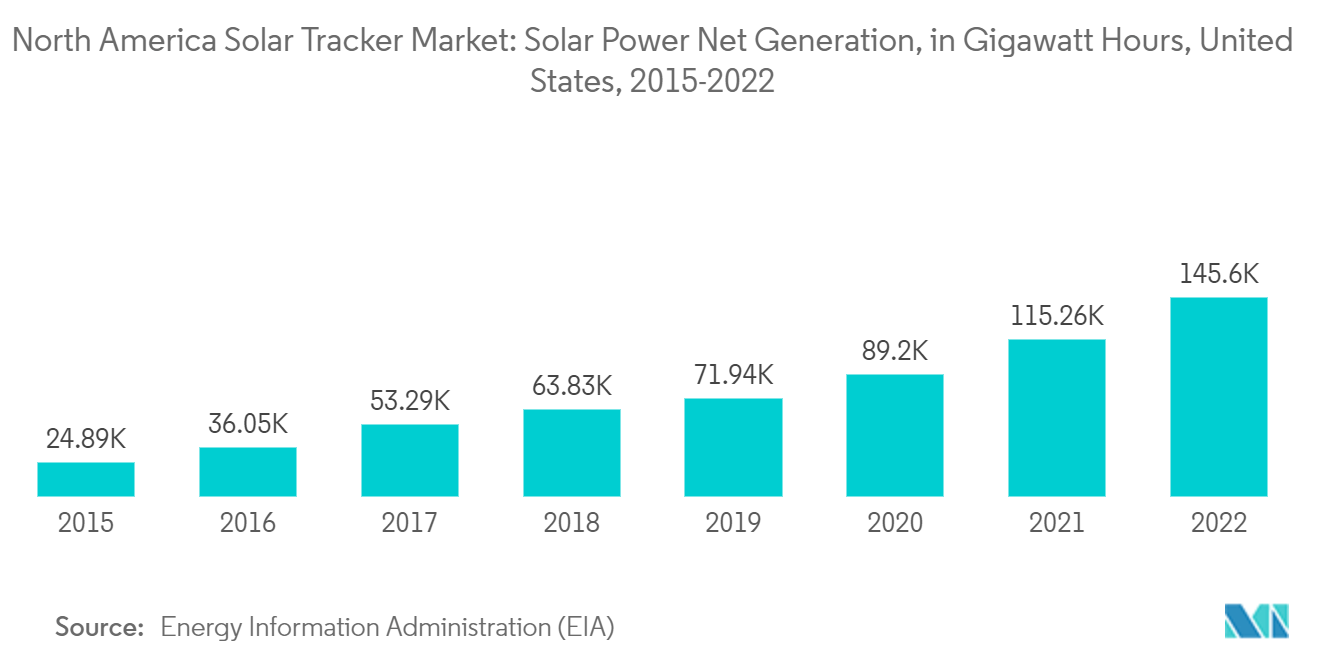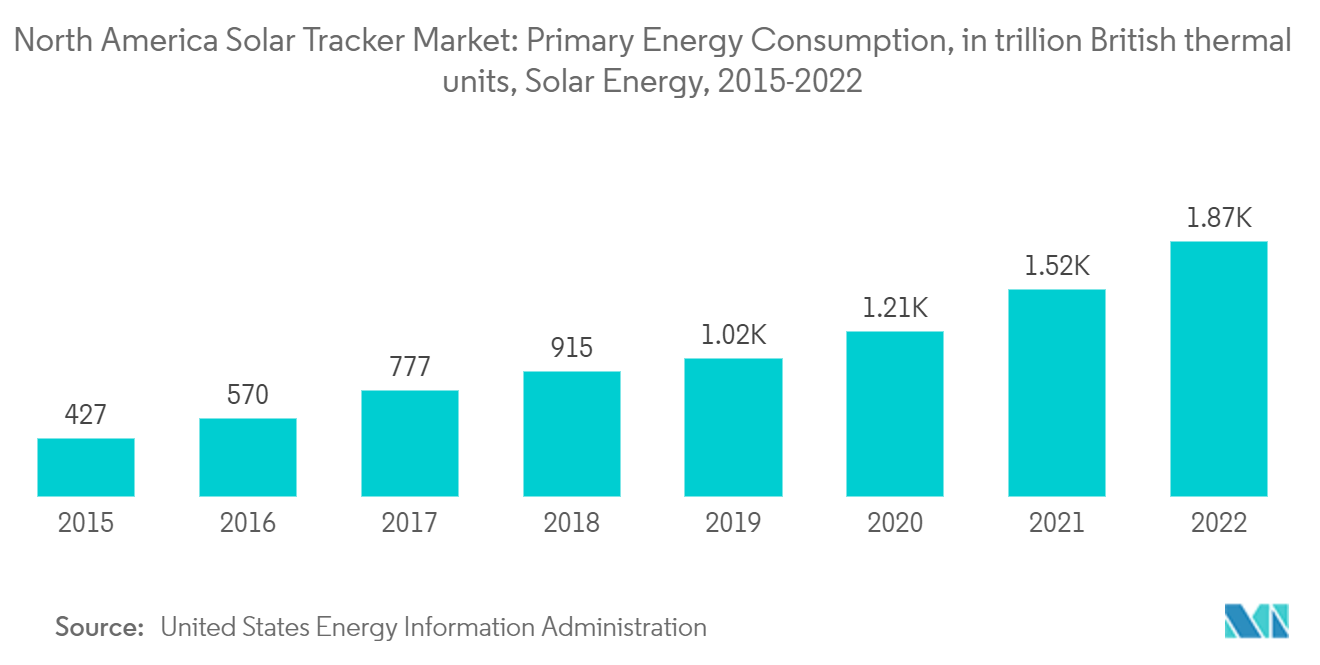Market Trends of North America Solar Tracker Industry
Single-Axis Expected to Witness Significant Growth
- Single-axis trackers are devices in which only one angle is used as the axis of rotation. These trackers can increase the power production capacity by 30%. They provide simple, efficient, and low-cost options to improve the functioning of solar energy systems.
- According to the United States Energy Information Administration, In 2022, the net generation of electricity from utility-scale generators in the United States was about 4,243 billion kilowatt hours (kWh) (or about 4.24 trillion kWh). Most of the ground-mounted solar PV installations employed single-axis trackers due to the economical and accessibility benefits of the type. The trend is expected to continue in the near future too, due to the upcoming utility-scale solar projects in the region.
- In the United States, the solar net power generation accounted for 145,598 GWh as of 2022, out of which Texas was the front runner, with around 6.1 GW of solar capacity under construction, followed by California. The projects are inevitably going to affect the solar tracker market in the country.
- Moreover, the new product launches by the industry players in the country, with advanced technical features, are expected to drive the solar tracker market in the region. For example, in September 2022, the US-based solar tracker systems manufacturer FTC Solar launched a new 1P solar tracking system, the Pioneer. The company has used fast-module hang technology and fewer fasteners for making the product, which reduces person-hours per MW.
- Such developments are expected to propel the single-axis solar tracker market in the region in the coming years.

United States Expected to Dominate the Market
- The United States has been on the track of solar progress for a long, with the combined effort of government agencies and private investors. The share of solar energy in the renewable power generation mix was around 165.4TWh (26%), the second ranking after wind energy. The source is expected to have a fast-paced growth in the unfolding scene, too, due to the government's efforts to expand the solar energy portfolio.
- The rising concerns for the high dependency on natural gas for energy generation, a fossil-based resource, and the upcoming utility-scale solar projects in the country will act as the catalyst for the solar tracker market.
- As per the Energy Information Administration and solar industry experts, solar energy leads the new renewable capacity added in the year 2022-2023. The utility-scale solar projects have accounted for nearly 49% of new capacity in 2022-2023, with 16 GW of value in 2023. The falling technology cost is expected to be the sole reason behind the prediction.
- The other major factor responsible for the growth of solar projects is the extension of ITC (Investment Tax Credit) for solar projects. For utility-scale solar projects, the allowance is for around 10% from the US Energy Department. Moreover, the country consumed over 1.8 quadrillion British thermal units of solar thermal and photovoltaic energy in 2022. This was the highest amount consumed yet and an increase of over 300 trillion British thermal units compared to the previous year.
- Moroever, in August 2023, Nextracker Inc. (NXT), a global manufacturer of solar trackers, and Asteelflash/USI, a high-end global electronics component manufacturer, announced the opening of Asteelflash’s United States manufacturing line for Nextracker. Asteelflash has expanded its capability to include dedicated production of Nextracker’s patented self-powered controller (SPC) and high-voltage power supply.
- Such developments will likely help the country to overshadow the other countries in the region in terms of market growth in the near future.


